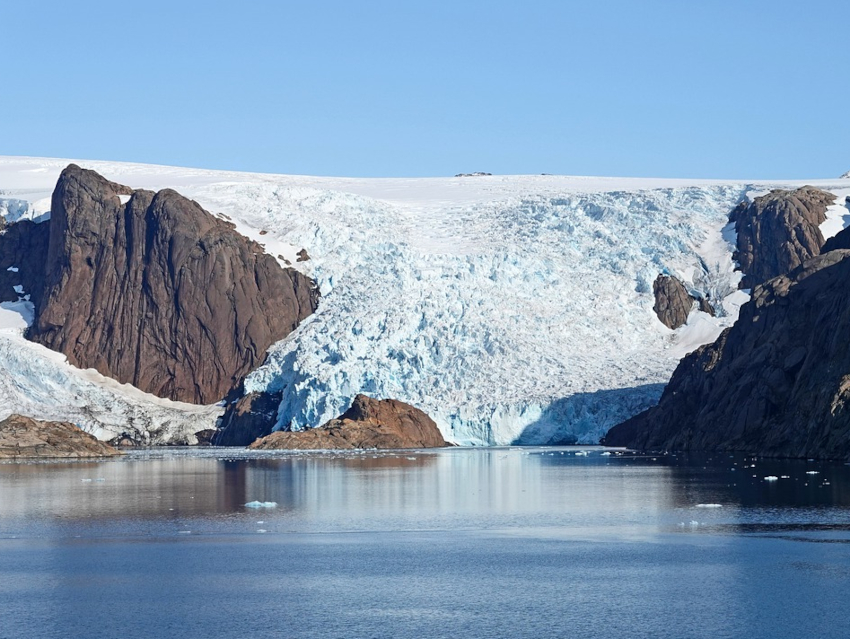Mercury is toxic and can accumulate, e.g., in aquatic food chains. The consumption of contaminated seafood can lead to harmful effects on human health. In the Arctic, in particular, mercury concentrations in marine animals have risen significantly in the last century. This is problematic because the local diet includes large amounts of seafood. While pollution is a major source of mercury in the environment, there are also natural sources. Runoff from glaciers, for example, could transport mercury into the ocean—a source that is sensitive to climate change.
Jon R. Hawkings, Florida State University, Tallahassee, USA, and German Research Centre for Geosciences GFZ, Potsdam, Germany, and colleagues have measured mercury concentrations in meltwater runoff from the Greenland Ice Sheet, which is transported to downstream fjords. The team collected water samples from sites along different meltwater rivers and fjords next to the ice sheet. Total mercury levels, as well as levels of dissolved inorganic mercury and methylmercury, were determined by cold vapor atomic fluorescence spectroscopy (CV-AFS) and total dissolved mercury levels were measured using inductively coupled plasma mass spectrometry (ICP-MS).
The team found concentrations of dissolved mercury that are among the highest recorded in natural waters. Mercury yields from these meltwaters (521–3,300 mmol km−2 y−1) are two orders of magnitude higher than from Arctic rivers, and the only known comparable waters are some rivers in Asia that suffer from industrial pollution. The precise source of mercury in the glacial meltwater is unknown. However, the levels of mercury in the meltwater are higher than those reported for surface snow and ice, which could indicate a source of mercury in the bed below the ice sheet. According to the researchers, the effects of meltwater runoff should be considered in the management of mercury pollution, especially in the context of climate change and the increasing melt rates of ice sheets.
- Large subglacial source of mercury from the southwestern margin of the Greenland Ice Sheet,
Jon R. Hawkings, Benjamin S. Linhoff, Jemma L. Wadham, Marek Stibal, Carl H. Lamborg, Gregory T. Carling, Guillaume Lamarche-Gagnon, Tyler J. Kohler, Rachael Ward, Katharine R. Hendry, Lukáš Falteisek, Anne M. Kellerman, Karen A. Cameron, Jade E. Hatton, Sarah Tingey, Amy D. Holt, Petra Vinšová, Stefan Hofer, Marie Bulínová, Tomáš Větrovský, Lorenz Meire, Robert G. M. Spencer,
Nat. Geosci. 2021.
https://doi.org/10.1038/s41561-021-00753-w




